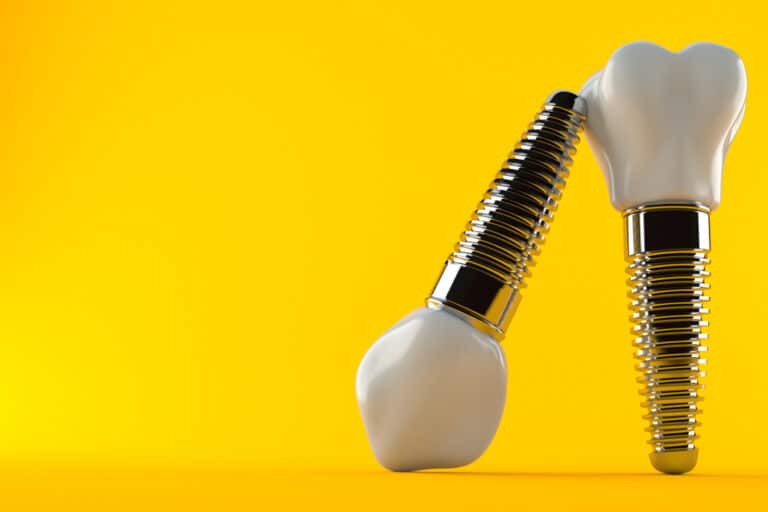Patients who are missing a tooth or multiple teeth can count on the dentists of Astoria Dental Group. We have helped numerous patients throughout Queens, NY who would like to replace their missing teeth. Dental implants are one of the most ideal options for tooth replacement. These artificial tooth roots have worked wonders for people missing teeth, whether it’s just one tooth or all of them.
People sometimes have a poor understanding of how dental implants work and what they are exactly. Let’s take a moment to consider the anatomy of a dental implant and how the different parts work.
How Dental Implants Work
Dental implants are artificial tooth roots that are designed to support crowns, bridges, or dentures. Thanks to dental implants, these artificial teeth are held securely, with a stability that is similar to natural tooth roots.
The most common kind of dental implant is the endosteal dental implant. These implants resembles screws or cylinders that are surgically embedded into both the jawbone and the gum tissue. There are three parts to an endosteal dental implant. These parts are as follows:
- The implant post
- The implant abutment
- The implant restoration
Let’s cover each of these parts below in a bit more detail.
The Implant Post
The implant post is the part of the dental implant that most people are familiar with. This is the screw-like portion of the dental implant that gets anchored into the jawbone during the initial oral surgery. The post is made of titanium, a biocompatible metal that fuses with the bone tissue. (This process is known as osseointegration, and it’s essential for the success of dental implants.)
The Implant Abutment
The implant abutment is a connection point for a dental implant. The abutment is placed on top of the implant post and is intended to join and secure the finished restoration. While implant posts are made of titanium, implant posts can be made of different materials. The ideal material for your implant post can be determined during the consultation process.
The Implant Restoration
The implant restoration is the artificial tooth itself that tops the dental implant. For a single dental implant, a dental crown is used as the restoration. When people are missing more than one tooth, a dental bridge is the restoration that is used. For people missing most or all of their teeth, a denture is the ideal restoration. Multiple dental implants may be needed to support the bridge or denture.
These restorations are custom created to match tooth color and to allow for comfortable biting and chewing.
Variation: Subperiosteal Dental Implants
In addition to endosteal dental implants, there are also subperiosteal dental implants. These kinds of dental implants involve a frame that is braced and secured to the jawbone rather than being screwed into the jawbone. The subperiosteal dental implant is laid beneath the gum tissue.
These kinds of dental implants are not as common as endosteal dental implants. Subperiodteal dental implants tend to be used on patients who have shallow jawbone density and would prefer to avoid undergoing bone grafting procedures to restore the missing bone tissue.
Contact Astoria Dental Group
For more information about dental implants and how they can help you have a full and complete smile, be sure to contact our team of experienced dentists today. The team at Astoria Dental Group will be more than happy to answer your questions and address your concerns.




